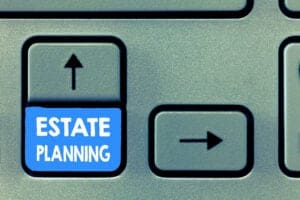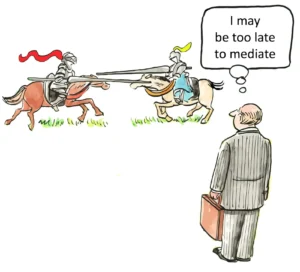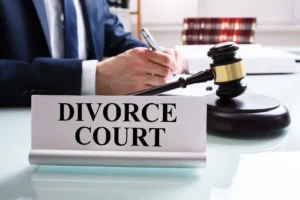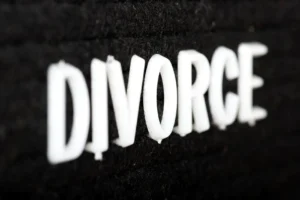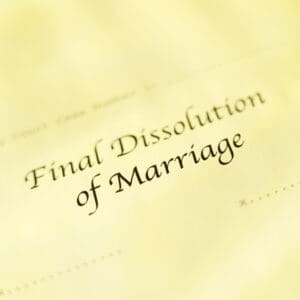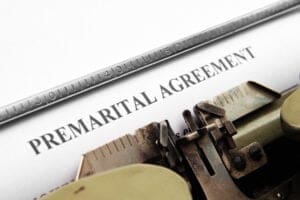How to Fight Back Against a Commercial Lease Dispute
Commercial lease disputes represent complex legal challenges that demand strategic thinking and comprehensive understanding of landlord-tenant law. These conflicts can arise from various sources including rent defaults, maintenance responsibilities, lease interpretation disagreements, or breach of contract claims, requiring parties to navigate both state-specific regulations and fundamental property rights principles.
What Should I Know About Commercial Lease Disputes?
Commercial lease disputes fundamentally differ from residential tenant matters due to their business-focused nature and limited statutory protections. Unlike residential tenancies, commercial leases typically offer tenants fewer protective regulations, placing greater emphasis on contractual terms and individual accountability for lease obligations.
The foundation of any commercial lease dispute resolution strategy begins with thorough lease agreement review. Most disputes stem from ambiguous contract language, undefined responsibilities, or failure to comply with specific notice requirements. Property owners and business tenants must understand their respective duty of care obligations, particularly regarding premises maintenance and safety standards.
Civil liability in commercial lease disputes often involves multiple factors including breach of contract, negligence, and statutory duty violations. The principle of property rights remains central to these disputes, emphasizing that both parties have legitimate interests requiring protection through established legal frameworks.
How Does Commercial Lease Dispute Law Vary by State?
State laws governing commercial leases create significant variations in tenant rights, landlord obligations, and dispute resolution procedures. California has implemented notably progressive tenant protections through Senate Bill 1103, extending residential-style protections to qualified commercial tenants including microenterprises and small restaurants.
New York commercial lease statutes provide additional complexities through the Commercial Tenant Protection Act, which limits landlord actions against small businesses and requires specific hardship documentation. The Act particularly affects businesses with fewer than 50 employees, creating enhanced protections against retaliatory evictions and requiring detailed procedural compliance.
Texas commercial lease dispute procedures emphasize contractual freedom while maintaining specific notice requirements for defaults and evictions. Texas courts generally interpret lease agreements strictly according to their written terms, placing responsibility on parties to negotiate comprehensive provisions addressing potential conflicts.
California’s approach demonstrates how comparative fault principles can influence commercial lease disputes, particularly in premises liability situations where both landlords and tenants may share responsibility for property conditions. This represents a shift toward more balanced accountability in commercial relationships.
When Can Someone Be Held Responsible Under Commercial Lease Law?
Legal responsibility in commercial lease disputes typically arises from three primary sources: contractual obligations, tort liability, and statutory violations. Property owners face liability for failing to maintain safe premises, violating building codes, or breaching lease-specified maintenance duties.
Commercial tenants become liable through rent defaults, unauthorized property modifications, improper use violations, or failure to maintain required insurance coverage. The principle of individual accountability requires tenants to understand and comply with all lease provisions, including complex Common Area Maintenance (CAM) calculations and operating expense allocations.
Duty of care obligations vary significantly based on lease structure and property type. In triple net leases, tenants typically assume broader maintenance responsibilities, while gross leases place greater obligations on landlords. Courts examine the specific lease language to determine which party bears responsibility for particular maintenance categories.
Negligence claims often arise when property conditions create safety hazards, requiring analysis of foreseeability, breach of standard of care, and causation. Both parties must demonstrate reasonable care in their respective responsibilities to avoid liability exposure.
How Does Comparative Fault Affect Commercial Lease Disputes?
Comparative fault principles increasingly influence commercial lease dispute outcomes, particularly in premises liability cases where multiple parties may share responsibility for injuries or property damage. This legal doctrine allows courts to allocate fault percentages between landlords, tenants, and injured parties based on their respective contributions to harmful conditions.
In commercial settings, comparative negligence analysis considers factors such as lease-specified maintenance responsibilities, property inspection duties, and hazard notification requirements. For example, if a tenant fails to report a known hazard while a landlord neglects routine maintenance, courts may assign fault percentages reflecting each party’s contribution to resulting injuries.
Property owners can reduce liability exposure through comprehensive lease provisions clearly defining maintenance responsibilities and requiring tenant compliance with safety protocols. Similarly, commercial tenants should document property conditions, promptly report hazards, and maintain required insurance coverage to minimize fault attribution.
The evolution toward fair compensation principles recognizes that commercial lease relationships involve sophisticated parties capable of allocating risks through contractual negotiations. This approach encourages proactive risk management rather than reactive litigation.
What Evidence Is Needed to Prove Negligence in Commercial Lease Disputes?
Successful commercial lease dispute resolution requires comprehensive evidence gathering and documentation strategies. Essential evidence categories include contractual documents, maintenance records, correspondence logs, financial statements, and photographic documentation of property conditions.
Documentary evidence forms the foundation of most commercial lease disputes, requiring parties to preserve lease agreements, amendments, notices, and all written communications. Payment records, including rent receipts, CAM statements, and invoice documentation, provide crucial proof of compliance or breach.
Property maintenance evidence includes inspection reports, repair invoices, work orders, and photographic documentation showing property conditions over time. This evidence proves critical in disputes involving premises liability, maintenance responsibilities, or property damage claims.
Communication logs documenting all interactions between parties, including emails, text messages, phone records, and formal notices, help establish timelines and demonstrate good faith efforts at dispute resolution. Witness statements from employees, contractors, or other tenants can provide additional corroboration.
The burden of proof in commercial lease disputes typically requires demonstrating breach of specific contractual obligations through clear and convincing evidence. Parties must establish not only that violations occurred but also that they suffered actual damages as a result.
How Do Commercial and Residential Lease Disputes Differ?
Commercial lease disputes involve substantially different legal frameworks, rights, and remedies compared to residential tenancy matters. Commercial leases generally provide fewer statutory protections, placing greater emphasis on contractual terms and sophisticated party negotiations.
Residential lease disputes benefit from extensive tenant protection statutes including habitability warranties, rent control provisions, and strict eviction procedures. Commercial tenants typically negotiate their own protections through lease terms rather than relying on statutory safeguards.
Eviction procedures differ significantly between commercial and residential contexts. Commercial landlords often face fewer procedural hurdles and shorter cure periods, though they must still comply with specific notice requirements and lease-mandated procedures.
Damage calculations in commercial disputes frequently involve business interruption losses, lost profits, and complex CAM reconciliations, contrasting with residential matters that typically focus on security deposits and property damage. Commercial disputes also commonly include attorney fee provisions allowing prevailing parties to recover legal costs.
The dispute resolution landscape emphasizes different priorities, with commercial matters focusing on business continuity and relationship preservation while residential disputes center on housing stability and consumer protection.
What Defenses Are Commonly Raised in Commercial Lease Disputes?
Commercial lease defendants typically assert several strategic defenses based on lease interpretation, performance excuses, and comparative fault principles. Contract interpretation defenses challenge opposing parties’ reading of lease provisions, arguing for alternative meanings that favor the defendant’s position.
Waiver and estoppel defenses assert that opposing parties’ conduct demonstrates acceptance of allegedly breaching behavior or prevents them from claiming violations. These defenses prove particularly effective when landlords have accepted late payments or failed to enforce lease provisions consistently.
Impossibility and frustration defenses gained prominence during the COVID-19 pandemic, as commercial tenants argued that government restrictions made lease performance impossible. Courts generally examine specific lease language addressing force majeure events and governmental restrictions.
Failure to mitigate damages represents another common defense, particularly in eviction cases where landlords allegedly failed to minimize losses by promptly re-leasing premises. This defense requires showing that reasonable mitigation efforts would have reduced claimed damages.
Comparative negligence defenses in premises liability cases argue that injured parties contributed to their own harm through careless conduct or failure to observe obvious hazards. These defenses can significantly reduce liability exposure even when property owners bear primary responsibility.
How Can Individuals Maximize Fair Outcomes in Commercial Lease Disputes Without Legal Advice?
Proactive communication and documentation provide the foundation for favorable dispute resolution outcomes. Parties should maintain comprehensive records of all lease-related activities, including payments, maintenance requests, correspondence, and property conditions.
Direct negotiation often produces better results than immediate litigation, allowing parties to address underlying business interests rather than strict legal positions. Successful negotiations focus on mutual benefits and relationship preservation rather than adversarial positioning.
Alternative dispute resolution methods including mediation and arbitration offer cost-effective alternatives to traditional litigation. Mediation particularly suits ongoing business relationships where parties benefit from collaborative problem-solving approaches.
Understanding lease terms thoroughly before disputes arise enables parties to identify potential issues and negotiate preventive measures. Regular lease reviews and compliance monitoring help prevent minor issues from escalating into major conflicts.
Property owners and tenants should familiarize themselves with relevant state laws and local regulations governing commercial leases, notice requirements, and dispute resolution procedures. This knowledge helps parties understand their rights and obligations while avoiding procedural mistakes that could weaken their positions.
Documentation strategies should emphasize contemporaneous records, clear communication, and evidence preservation. Parties who maintain detailed records of lease performance typically achieve better outcomes in dispute resolution processes.
The Future of Commercial Lease Dispute Resolution
The commercial lease dispute landscape continues evolving through technological advancement and changing legal frameworks. Artificial intelligence applications increasingly assist with lease administration, risk assessment, and dispute prevention through automated contract analysis and predictive modeling.
Online dispute resolution platforms offer enhanced accessibility and efficiency for commercial lease conflicts, particularly benefiting small businesses with limited litigation resources. These technological solutions complement traditional mediation and arbitration processes while reducing time and cost barriers.
Property rights protections remain fundamental to commercial lease relationships, with courts continuing to emphasize contractual freedom and individual accountability principles. However, emerging tenant protection legislation in states like California and New York suggests a gradual shift toward more balanced commercial lease regulation.
Alternative dispute resolution methods will likely expand as parties seek to avoid increasing litigation costs and lengthy court procedures. The average commercial lease dispute costs between $50,000 and $200,000 according to recent studies, creating strong incentives for efficient resolution alternatives.
The integration of technology with traditional legal principles promises to enhance fair compensation outcomes while preserving essential property rights and individual accountability frameworks that support healthy commercial real estate markets. These developments reinforce the importance of proactive dispute prevention and collaborative resolution approaches in commercial lease relationships.
- What Are Your Rights in a Commercial Lease Dispute?
- Resolving a Commercial Lease Dispute: The Basics
- How Do Commercial Lease Disputes Arise and What Are Your Options?
- The Litigation Process for Commercial Lease Breaches
- Maintenance Clause Considerations in Commercial Leases
- Commercial Landlord and Tenant Disputes Overview
- How to Handle Commercial Lease Disputes in Court
- Top Evidence for Landlord and Tenant Disputes
- Mediation Solutions for Commercial Lease Disputes
- California Expands Tenant Protections for Certain Small Commercial Tenants


